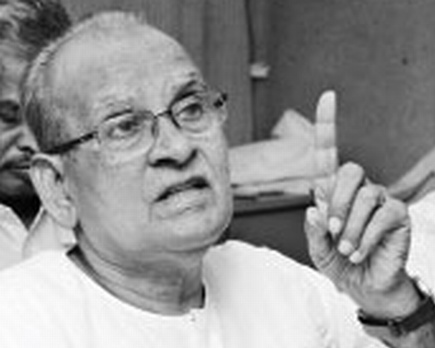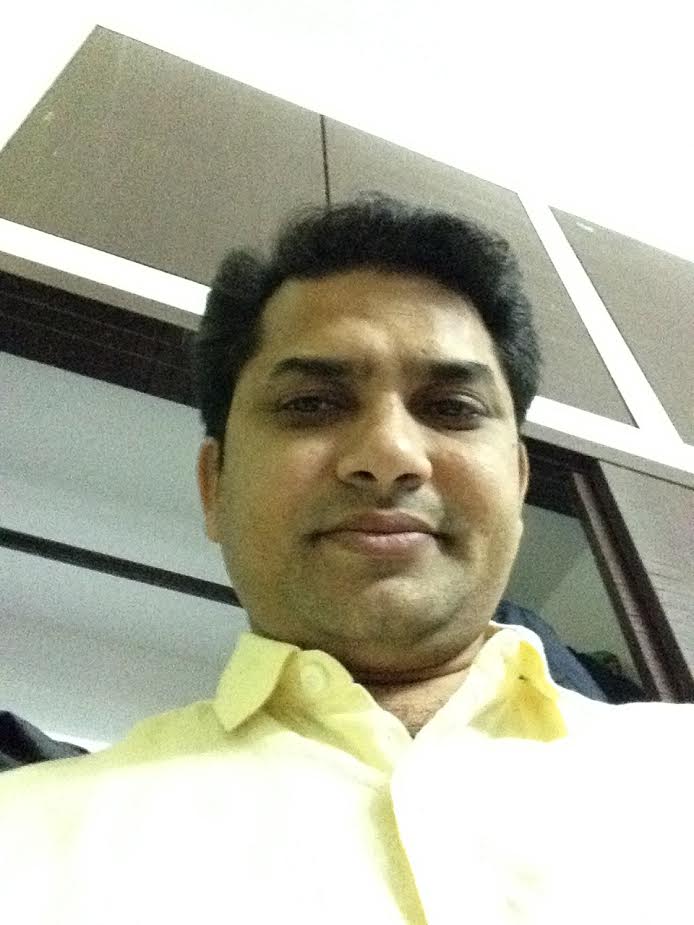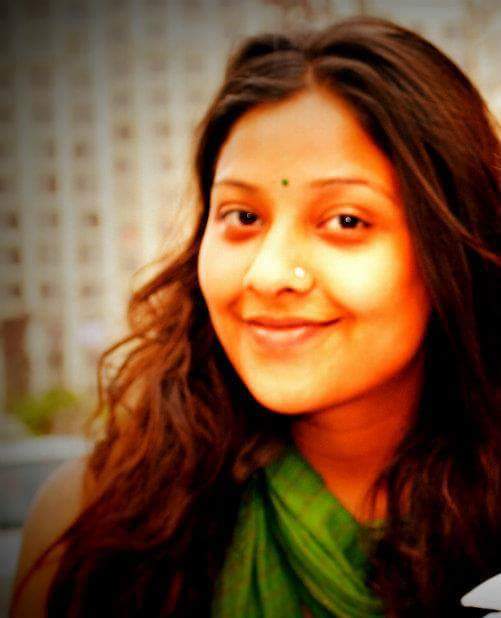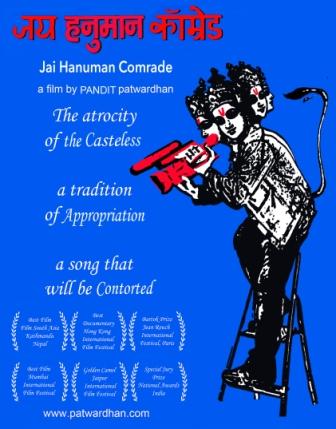We thank Prof K. Satyanarayana for sharing this note with Round Table India.
[Senior Advocate, Poet, Writer, Activist and Public intellectual Shri Bojja Tharakam (77) passed away last night (September 16th) around 10.45 pm in his flat in Ashok Nagar, Hyderabad. He has been under treatment for brain tumour for the last two years. He declared in an interview with us: ‘I think of myself as both an Ambedkarite and a Marxist.’
The short biographical note was prepared based on our interview with Shri Bojja Tharakam in 2012. Taken from Steel Nibs Are Sprouting, 2013. After the publication of the volume, Tharakam garu read the bio note and made corrections of factual details. I incorporated all his corrections in this note.]

Bojja Tharakam’s family home is in Kandikuppa, a tiny village of scheduled castes, located at a point where the Godavari joins the sea. It lies in the Konaseema area of the East Godavari district in coastal Andhra Pradesh. Between the village and the sea, there was no habitation, except for the fisher-people’s shacks along the shore. His father, Bojja Appalaswamy, was a teacher and a political figure, who, as early as 1942, had set up a unit of the Ambedkar-led Scheduled Caste Federation in the area. At a time when most schoolteachers had studied only up to the third or fourth class, this SSLC-passed and trained teacher was something of a legend. He was elected to the Legislative Assembly of Madras state in 1952 and to Andhra Pradesh Assembly in 1952. Tharakam’s mother, Mavullamma, had never been to school, but had learnt to read and write with the help of her husband.
Tharakam was born in 1939 in the village Pachchalanadukuda. Appalaswamy established a primary school in the village for SC children so that these children would not have to walk the ten kilometres up and down to school that he himself had been forced to trudge as a child, and this is where Tharakam studied during his early years. Later, he moved to the Pithapuram Raja’s School in Kakinada, which had a hostel. ‘Most of the first children to get an education in the Godavari area went to Pithapuram only because of that hostel facility. In fact, there were two hostels, one for boys and the other for girls; the girls were mostly orphans,’ Tharakam observed. He continued: ‘Devulapalli Krishnasastri, a noted Telugu romantic poet, was one of the honorary wardens. The attraction between him and my father was mutual. Back in the day, my father was one of the youngest students there; what is more, he could sing well and had learnt a number of kirtans from my grandfather. Krishnasastri who belonged to the “rebel” religious formation, the Brahmo Samaj, was also musical. It was a relationship that lasted for many years. My elder brother is named after Krishnasastri.’ Though the school was meant for everyone, dalit students were given particular encouragement. The girls’ hostel was a palatial building—it now houses the Kakinada Medical College—and when he was questioned about it grandeur, the Pithapuram Raja is said to have replied: ‘These are not orphans; they are my children. Where would the children of a raja live, if not in a palace?’
Bojja Tharakam himself is named after the distinguished social thinker and district education officer, Kambhampati Tharakam, with whom Bojja Appalaswamy stayed while he was doing his teacher training. The story goes that Raghupati Venkatratnam Naidu, the principal of Pithapuram Raja’s college and social reformer who later became the vice chancellor of Madras University, had once seen two girls begging at a railway station. Moved by their plight, he sent someone to bring them to Madras, adopted them and gave them an education (they were both MA, B.Ed.). Kambhampati Tharakam wanted to marry one of them, but he had to break all ties with his family to do that, because he was from an orthodox brahmin family. ‘He used to close his letters to my father with the phrase, “your father”,’ Bojja Tharakam recalls, adding ‘When Vijayabharathi and I were married, he conducted the wedding.’ Theirs was a secular wedding, conducted without religious rites.
‘My father imbibed the spirit of social reform from the Brahmo Samaj and his political spirit from the land struggles that he was involved in. We grew up listening to his criticism of the rajas and the zamindars, who were also the strength of the Justice Party in the Godavari area. When Gandhi came to Kakinada sometime in the 1930s, Father was a volunteer. He was among those instrumental in setting up the early twentieth-century Adi Andhra movement in this region, and was active in the Field Labour Cooperative Society in Amalapuram taluk, the most important land movement of the time. This whole question of land is important. The British used to allot land to the Society, which had the right to cultivate but not to sell. Some of the really fertile islands in the Godavari Delta had been occupied by the upper castes. The British evicted them, assigned the land to the dalits (known as the depressed classes at the time) and encouraged them to educate their children. However, the upper castes would not allow dalits to cultivate or harvest the crop, and there were pitched battles between these two groups all through the 1930s and ’40s. As a result, in 1942, when Ambedkar toured the region, these people were well prepared to hear what he had to say. The reception he received was electrifying. His speeches ignited the entire Konaseema area. So when my father stood against the Congress in the elections, he won with an easy majority. When I was a child, my father was fully involved in these issues, and he was always out on tour. He had engaged two teachers for the school, and my mother looked after everything at home single-handedly.

Tharakam’s grandfather, Govind Das, was also a well-known and respected figure. He had worked in Rangoon and, with the money he saved, bought some land in the village and constructed a two-storey house—the only one in the area. He was a religious person who wore saffron clothes and toured the area preaching and singing. He had followers from different castes—kapus, kammas, fisher people. Their house, Tharakam recalls, functioned like a mutt, with hundreds of people coming through. Once a year, there would be a big gathering and they would sing through the night. ‘My politically active father and religious grandfather tolerated each other. I do not remember any quarrels. Perhaps that is why my father tolerated me,’ Tharakam observed wryly.
Musical talent runs in the family. Both Tharakam’s father and grandfather were poets and sang well; so are Tharakam and his brother. ‘During the summer holidays, we wrote and staged plays. All three generations were active socially. At night, father would meet with the villagers and teach them about Ambedkar. I used to go along and sing. These activities continued until 1952, when father started a new life in parliamentary politics. Possibly because of the rich cultural heritage that I brought with me and certainly because my father was an MLA, I was never personally subjected to untouchability. I have no personal experience of it, but father had a very interesting story from the late 1930s of his battle with the famous Surabhi Natya Mandali [a highly popular Telugu drama troupe, known for its mythological and folk plays]. In their shows, there were separate places for panchamas and women. Upper-caste men could buy chair tickets. Appalaswamy arrived on his bicycle, dressed as always in a full double dhoti and clean ironed shirt. For three days he held up the Surabhi performance at Kandikuppa insisting on a chair ticket. Word spread that he was doing so and a huge crowd of young people gathered. Finally, on the fourth day, Surabhi gave in. With the chair and bench classes now open, hundreds of others also bought tickets.
‘After primary education, my brother and I joined McLaren High school in Kakinada. In 1958, I began college studies. I got an admission in Kakinada Engineering College, but was not allowed to join since I was under-age. During my college days at PR Government College, I became a student activist of the SC Student Federation. I became its district president. My brother and I took up several activities between 1954 and ’58, including a thirty-day dharna at Ramachandrapuram against the SC hostel management for not providing proper food. The leaders went around, collected rice and gave it to the boys to cook. Every year we celebrated Ambedkar’s birthday.’ Tharakam wanted to do an MA in Maths and Statistics, but found that Osmania University was not permitting students from Andhra region to study a Masters programme in Maths if the same course is available for them in Andhra University. ‘But I did not want to leave Hyderabad, where I had become involved in many cultural activities, so I decided to study Law and enrolled in the evening college.’ His classmate [whom he married in 1968] Vijayabharathi’s father, the well-known dalit poet Boyi Bhimanna, who was the government translator, offered him a day job as junior translator. Motukuri Johnson was also working in the department. Together they formed Sukhela Niketan, a cultural organization that produced plays, staged ballets and dance dramas.

Tharakam entered a new phase in his life in the late-1960s when he moved to Nizamabad and embarked on his career as an advocate. He soon realized that the people there had many problems and that there was a total absence of legal assistance to help them fight atrocities, being falsely implicated in cases of petty theft or false cases filed by landlords against farm hands, and so on. The very first case he fought in Kakinada involved two farm servants. The landlord had blocked the flow of water from the canal into their land, diverting it all into his fields. No one dared to touch his bunds. These two went out at night and cut them open. The landlord found out and attacked them. They retaliated. He filed a case against the farm hands, who were jailed. ‘Their relatives came to me with great hope. I was the son of an MLA, a student leader. I filed a bail application—on my own; my senior was a civil lawyer—and luckily bail was granted. The village was overjoyed. It was a great victory for them. For me, it was the first step on a path I have travelled ever since. Work was heavy. I was not earning much but we managed. Bharathi had got a job in a women’s college in Nizamabad; and there was what Father had left us.’
In Nizamabad, Tharakam connected up with Battula Punnaiah, a lecturer in one of the colleges, who had started spreading Ambedkar’s ideas among the youth. Punnaiah worked with Tharakam in organising Ambedkar Yuvajana Sangham. Tharakam recalls organizing a large meeting on Ambedkar’s birthday, where he spoke about the connection between Ambedkar’s writings and the student’s lives. The effect, he says, was electrifying. It was as if a totally new world had opened up for them. ‘Dr Ambedkar actually helped me reach the people,’ Tharakam observes.
‘Inspired by the Dalit Panther movement in Maharashtra, which was at its height in the late 1960s and early ’70s, we formed the Ambedkar Yuvajana Sangham [AYS], a district-level organization with branches in many villages. They held public meetings in the villages in front of the panchayat office or in a school. It was an altogether new experience for the dalits—having a meeting like this, especially for them—a meeting they could think of as their own. These organizations made it possible for the dalits to imagine that they could challenge the authority of the Reddy landlords. Take for example what happened in 1971. A farm servant was killed by a landlord in Palem, a village thirty or forty kilometres from Nizamabad. We received the information from our branch in Palem. But how were we to get there? One of the students told us that his father had a lorry and we managed to get it. It was the very first time a whole group had gone like that—a group of dalit students in their own lorry, to a village where an atrocity had taken place. We made a banner, raised slogans. The landlords sent a message saying that we would be finished off by the time we reached Armur. We paused momentarily, then said to ourselves, ‘Nothing will happen.’ Nothing happened. As we passed each village, our spirits rose. When we arrived in Palem, we were received like heroes. We decided to hold a public meeting condemning the attack and denouncing the reddy landlord for killing his servant. Such a thing had never happened before. People were scared (and so was I), but I assured them that nothing would happen. They picked up their sticks and we took out a rally. It was a tremendous success, and word spread immediately over the whole district.

‘Everything was new: each step a new step, each move a new move, each word new. It was an unforgettable experience both for the students and for me,’ Tharakam stresses. Sometime later, the Raitu Coolie Sangham (RCS) began working in the area. Tharakam’s knowledge and understanding of both Ambedkar and Marx (‘I think of myself as both an Ambedkarite and a Marxist, and the task of synthesizing these philosophies was challenging; my 1980 book, Kulam-Vargam is based on these experiences’) made it possible for the AYS and the RCS to work together closely. ‘RCS certainly had the organizational strength, but without AYS, they would have had no footing. Sadly, they have never acknowledged this,’ Tharakam observes. In the early 1970s, both groups were involved in the occupation of 200 acres of government land in Pachchalanadukuda that had been illegally occupied by some reddys. It was a tough fight. ‘Atrocities rained on the people. Villages were attacked; houses and crops destroyed, women molested. One day, some dalits returning to the village on their carts were waylaid and attacked. One of them, thought to be dead was thrown into the bushes. The village is about 20 kilometres from Nizamabad town. People came to my house in the dead of the night. Together we went to Punnaiah’s house. He knew the DSP in Nizamabad who happened to be dalit. The DSP responded immediately, sending a police contingent to the village early in the morning. They shifted the injured to the hospital. This had a huge impact and such things did not happen again. Dalits and BCs were both involved in this struggle. Many such issues were taken up, largely against rich and influential reddy landlords, and in some cases, velamas. Initially, they were hesitant to eat together, but after two or three months of continuous struggle, and with gentle encouragement, they began to share their food.
‘Right through this period, I was constantly away from home, travelling by bus, bicycle, bullock cart. Getting the injured into hospital, registering cases, arguing in court took up all my time. Bharathi, who had by then completed her Ph.D., had become vice-principal. In addition, she had to manage the home and the children. Punniah was supportive—helping us contact officials, providing whatever money he had—and so were the RCS people, Krishna Reddy and Yadgiri. A big part of the activity was sustained through the courts; and this was considerably before what is generally thought of as the period of civil liberties activism during and after the Emergency. I used to encourage people to go to the police station to file cases. “It does not matter that you cannot write, file an oral case,” I used to say. Both as a lawyer and as a political leader, I became a real presence. I would finish work in the field, change my clothes and enter court. Before my time, people who had been attacked by reddys had to be defended by reddy lawyers. All that changed. Fortunately for me, the Bar was uncertain about my caste. My grasp of both Telugu and English, my bold arguments and a predilection for quoting from the Ramayana and Mahabharata, confused them.’
As president of the AP Beedi Workers’ Union in Nizamabad, Adilabad and Karimnagar, Tharakam was involved in the forty-day strike demanding the implementation of the Beedi and Cigar Workers Act of 1964. His involvement with the RCS and Revolutionary Writers’ Association (Virasam) landed him in jail during Emergency in July 1975. He was detained under the Maintenance of Internal Security Act and the Defence of India Act till July 1976. During this phase, Tharakam was vice president of the Andhra Pradesh Civil Liberties Committee (APCLC) and also a member of the Revolutionary Writers’ Organization. During this period, he organised several fact finding committees to unearth the facts relating to fake encounters of Naxalites. He filed several cases in different courts for taking action against the police officers who were responsible for those fake encounters. In 1978, he stood from Nizamabad as an independent candidate supported by the CPI-ML. He moved to Hyderabad, but remained active in the AP Ambedkar Yuvajana Sangham, the SC Welfare Association and with the work of the Civil Liberties.
Tharakam began his career as an advocate in the district court of Kakinada in 1965. He moved to Nizamabad and continued his legal practice (1968–78). In 1978, after Vijayabharati got a job in the Telugu Akademi, he shifted to Hyderabad, where he worked in the AP High Court and fought many cases. He was appointed as government pleader in 1984 for the AP Administrative Tribunal. He resigned this post in protest against the Karamchedu massacre and filed a private case against the kamma landlords. He was one of the first two dalit advocates to be designated senior advocate of the AP High Court. In his long and distinguished legal career of forty-six years, Tharakam has argued in the lower courts, the High Court and the Supreme Court.

Tharakam was a key figure in moving dalit groups from presenting memoranda to the government or trying to get things done through their contacts with ministers and officials, to actual fact-finding, writing up of reports and holding press conferences. ‘All this infused a great deal of confidence in the victims. In many places, people themselves began reporting incidents, filing FIRs and so on. The Padurukuppam attack on dalits in Chittoor district in 1984 (this took place prior to the much better known Karamchedu outrage) is a good example of this kind of work,’ he explained.
‘In 1985, when Karamchedu happened, we were prepared. All democratic forces came together in that struggle—I could mobilize their support. The challenge was to sustain the mobilization, sustain the struggle. The formation of the DMS [Dalit Maha Sabha] was a great event. Help and assistance arrived from all over the state, and we were able to build an organization of dalits fighting for themselves. DMS represents the dalit confidence that we can fight these battles ourselves. I stayed in Karamchedu for two months. DMS inspired real confidence. We organized the first all-India dalit protest in Karamchedu. It is a great feeling to have been part of that struggle.’
Tharakam was the founding president of the AP Dalita Maha Sabha and continued in this position till 1991. He was the state convenor of the Chunduru Struggle Committee, and in 1989 became the founding AP general secretary of the Bahujan Samaj Party. He resigned from BSP in 1994, opposing its alliance with the BJP in Uttar Pradesh. Tharakam also got involved in the struggle against atrocities in other states—especially Karnataka and Bihar. ‘We were close to the Dalita Sangharsha Samithi [DSS] in Karnataka, and to groups in other states. In 1987, we organized an All India Dalit Writers’ Conference. About a thousand writers came and we brought out a souvenir that featured a number of black writers also. I specially remember Paul Chirakkarodu.’ He edited the First All India Dalit Writers’Conference Commemorative Volume, 1994. He organised Republican Party of India and became its state president in 1995. He spearheaded the movement for effective implementation of special component plan for SCs and Tribal sub-plan for STs. He was the state convenor of Lakshmipet Dalit Solidarity Committee.

Tharakam is a poet, writer, translator and political commentator. His first collection of poetry, Nadiputtina Gontuka (The Voice That Gave Birth to the River, 1983), was written in jail during the Emergency. A second collection, Naalage Godavari (The Godavari is like Me), came out in 2000. His booklet, Poleesulu Arrestu Cheste … (If the Police Arrest You …, 1979) was first published by APCLC, and later serialized in the magazine, Commando. It sold over 30,000 copies. The Hyderabad Book Trust republished it in 1983 and it ran for thirteen editions. His other books include Kulam–Vargam (Caste–Class, 1996), Brazil Prajala Bhooporatam (The Land Struggles of the Brazilian People, 2003), Nela, Nagali, Moodeddulu (Land, Plough and Three Oxen, 2008) and Dalitulu–Rajyam (Dalits and the State, 2008). His English writings include Constitution: Coup d’Etat (2000). Tharakam translated important works by and on Ambedkar into Telugu much before the Maharashtra government brought out the Ambedkar volumes. A founding trustee of Dr B.R. Ambedkar Memorial Trust set up in 1984 to disseminate Ambedkar’s philosophy, he was also involved in the official project of translation of B.R. Ambedkar’s writings into Telugu and co-editor for volumes one, four and ten. He was editor of the dalit little magazine Nalupu (1991–94), and since its foundation in 2008, of Neeli Jenda (Blue Flag; meaning, Ambedkar’s flag). A novel, Panchatantram appeared in 2012.
~~~










